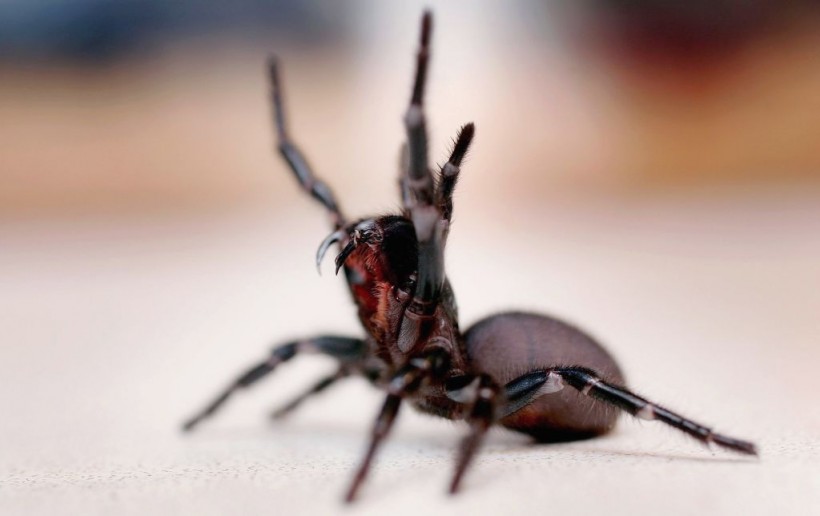Researchers have discovered how female funnel weaving spiders have bizarre mating behaviors. According to a new study, these creatures play dead during sex to make males less worried about getting eaten after the intercourse. Because of this, females also get to choose the best mates.
Sexual Cannibalism and Sexual Catalepsy Among Funnel Weavers
As per Live Science, there are funnel weaving spiders, which are also referred to as funnel web spiders or funnel weavers, that take part in sexual cannibalism. This means that the females eat their male mates after the intercourse.
As a result, sex becomes less appealing for these male spiders, who have to risk their lives to perform the act.
Yahoo! reports that, in order to bypass this, certain species have started engaging in a behavior called sexual catalepsy. In such a phenomenon, the female curls her legs and does not move, as if she is dead. Males can then engage in mating without worrying about getting eaten by the female afterwards.
While researchers have been familiar with such a phenomenon for quite a while, it was not clear whether the immobilization was voluntarily for the males' benefit or if the behavior was precipitated by males through a chemical or behavioral trigger of some sort.
ALSO READ: Male Spider Evades Sexual Cannibalism by Catapulting Itself Midair
Who Controls Sexual Catalepsy: Male or Female Funnel Weavers?
In a recent study, the researchers did some experiments on these spiders from the Aterigena aculeata species to compare sexual catalepsy to other behaviors and assess if males or females controlled it. The findings were included in the Current Zoology journal.
The researchers examined four females in one out of three different situations, namely, playing dead (called thanatosis) after getting shaken inside a test tube, doing sexual catalepsy during mating, and being induced with sleep through anesthesia in order to mirror a probable chemical trigger produced by males.
The spiders were then frozen until they died, and their bodies were retrieved so that the scientists could examine the chemicals behind the spiders' behavior. By doing so, researchers got to examine the chemical and physical similarities between behaviors.
Mark Elgar, a co-author of the study and an evolutionary biologist from the University of Melbourne, said that if sexual catalepsy was similar to thanatosis this meant that females had control over it. However, if it were more like anesthesia, this means that males could have influenced sexual catalepsy.
Findings revealed that sexual catalepsy was much more similar to thanatosis, which suggests that females manage the behavior and that the action serves as a way for them to filter mates. Elgar notes that, if female funnel weavers do not engage in sexual catalepsy, mating does not happen.
While sexual catalepsy takes place across other funnel weaver species, it is too soon to conclude if the same technique works the same way across other specific species. Elgar notes that it is still not clear whether this behavior is an evolved female mechanism for choosing mates or a male protective mechanism to safeguard themselves against sexual cannibalism.
RELATED ARTICLE: Sea Spiders Show Unusual Ability to Regenerate Nearly Complete Bottom Halves, Study Finds
Check out more news and information on Spiders in Science Times.















